Former President of the Royal Astronomical Society Professor Herbert Dingle is remembered nowadays, if at all, as the most prominent critic of Einstein's theories of relativity. His name is largely kept alive by those who write crank literature, who find his scepticism towards relativity helpful to prop up whatever particular crackpottery they happen to espouse. During Dingle's lifetime (he died in 1978) crank authors would also bother him personally with their pet notions -- and I can state this with confidence, because I happen to have Dingle's own copy of Gerald Lebau's The Nature of Matter and Energy, which provides concrete evidence of the degree to which Dingle was targeted by cranks like Lebau. The book came to me complete with several letters sent to Dingle by Lebau along with Dingle's copies of his replies. (Dingle thriftily made carbon copies by reusing other items of correspondence, so for example one note to Lebau appears on the rear of a letter from the British Society for the History of Science about an upcoming meeting in January 1966.)
Dingle answered letters from cranks politely without offering any endorsement of their ideas, but, if Lebau is typical, this approach did not deter them from continuing to badger him. Here's what he wrote after receiving the book:
1966 May 24
Dear Dr. Lebau,
Thank you for your letter and for the book which you have kindly sent me.
I agree with you that the special relativity theory is untenable. Therefore one of its basic postulates - the postulate of relativity and the postulate of constant light velocity must be wrong. The next step is to discover by experiment which Is wrong, and until that is done I think all theories are premature. Indeed, it would be physically impossible for me to comment on all that I receive, since they are so numerous.
I can therefore only suggest that you wait for the performance of a legitimate experiment to determine, for example, how the velocity of light is related to that of its source then consider your theory in the light of that knowledge.
Yours sincerely,
After this Lebau wrote to Dingle again at least five times, on one occasion asking for a meeting, hinting that he'd also like to meet with "Popper" (Karl Popper, presumably):
Dear Professor,
I shall be in England May 5—11 and would very much like to meet with you. l'd like also to meet Popper, some of whose works I have seen.
Can it be arranged?
Regards,
Dr. Lebau
Gerald Irving Lebau (1923-2011) was a New Jersey dentist, who, convinced he'd found errors in the work of Einstein's and others, wrote The Nature of Matter and Energy in the expectation that the world would eventually come round to his way of thinking. Unfortunately, if there is indeed a valid refutation of relativity in his book, it is so buried in muddle and confusion that I doubt anyone will find it. His grandiose preface sets the scene very well for what is to come (emphases mine):
This book is a qualitative description of the mode of operation of everything inanimate in the world, from atomic nucleus to galactic universe, It started many years ago as an attempt to decipher the mechanism of gravity. In that endeavor, it gradually became evident that to reach that goal the detailed structure, composition and physiology of everything else also had to be understood.
In following the chains of logic through their almost interminable convolutions I gradually found that many modern concepts had to be traced back to their origins, and then pressed even further back, into their premises. Many of those premises, it developed, had to be given up and denied. Indeed, so intertwined and dependently inter-related are the many diverse theories of modern science, that it slowly became evident that a thread of error permeates all the branches of the existing tree of knowledge. The very words used were found to possess erroneous implications and even inherent contradictions. In time, new modes of thinking developed, without words. Later, to communicate the conclusions, old words had to be redefined, discarded concepts had to be polished up and revived, existing concepts had to be destroyed (if only to be rebuilt again with slight but enormous changes), and some new words had to be invented.
This is not an easy book to read. Part I deliberately exposes many inconsistencies of existing theory, but in so doing assumes the appearance of confusion. It is the theories that are confused, not the presentation. [...]
Clues to Lebau's thinking may be found here. His avowedly "not an easy book" is "qualitative", not quantitative, indeed one of his criticisms of Einstein and other 20th century scientists is that their work is overly mathematical. What he has against "the very words" used is less clear, except that he prefers his definitions to be vaguer than mainstream science will allow:
Energy is motion and pressure. The two are interconvertible. The vehicle for energy, that which presses or is pressed, that which moves and through which motion takes place, is matter.
Not content with sucking all the meaning from rigorous scientific terms, Lebau demands that new ones of his own invention be adopted, for novel concepts that nobody else has seen a need for.
Densum. In considering the actions of matter-units, a steel cube for instance, we must consider not only its motion, but the effect of that motion on the material-filled space through which the cube moves. For instance, if a one-foot cube moves through a medium at 10 feet per second, it will have displaced at least 10 cubic feet of medium per second. But "10 cubic feet of medium per second" is a variable quantity, depending (for absolute amount of material displaced) upon the density of the material in the given space. Since we long since recognized that matter fills all space, and is intrinsically a compressible fluid of variable density, it follows that absolute density is not measured by numbers of matter-units in a given space, but is instead represented by the total amount of all matter in that space, hence requires some term that denotes a certain total amount of material per unit volume. We shall use the term, "densum." A "densum" is that amount of continuous ether which would exist within a cubic foot volume maintained at Earth surface level ideal conditions, and emptied of all organized matter-units. The plural of densum is naturally, "densa."
Densa and densa, one may find oneself muttering.
Other terms he originates include 'cad', 'abram', 'inergy', 'sorce' and 'rinx', each with an equally impenetrable definition, with the result that much of his writing is impossible to read and - what a bonus! - equally difficult to refute. Unfortunately, incomprehensibility is not enough on its own to win your work a Nobel prize.
Like many anti-Einsteinian cranks, Lebau clings to a belief in the aether - an invisible fluid present everywhere which was supposed to be the medium for light-waves - and he spends many pages attempting to show why the Michelson-Morley experiment, which is widely understood as proving the non-existence of the aether, doesn't in fact do so.
Einstein's papers for his theories of relativity from 1905 and 1915 famously use thought experiments to illustrate his reasoning. Lebau elaborates his own versions of these, adding to the fun by introducing two aliens called "Duggie" and "Glird" who, as superior beings, recognise that Lebau's version of science is correct while everyone else's is wrong. Astonishingly, when these two perform their own experiments, things turn out as predicted by Lebau, not as by Einstein.
Not content with thus assailing Special and General Relativity, Lebau also goes for Quantum Mechanics, using an unusual choice of weapons:
The experiment requires a hand-attached vibrator. (The kind you massage your skull with.) It requires you and a room in addition. Plus an electric power source to run the machine.
Attach the vibrator to your hand and turn it on. Note the rate at which the motor runs. (Listen to it.) Now gently place your hand on the floor. No change. Now press harder and harder.You will note that the vibrator suddenly slows down enormously, to again run at a constant but slower speed. Varying the pressure against the floor will yield no intermediary speeds of the vibrator, it will either run full speed or at the slow speed.
Indeed, if the vibrator is strong enough, it will just continue to run at a constant speed no matter how hard you press it. But if the motor is of appropriate strength, it will run at either of two speeds, depending on how hard it is pressed against the floor.What is the significance, if any, of this experiment? If nothing else, it provides a guide to our thinking, It suggests that a given amount of energy (the motor) will cause an action on the part of a given amount of material, and that when an additional amount of material is attached to the motor (by pressing it upon the floor) the action will change to a new constant amount.
In this experiment it is seen that there are discrete levels of vibration possible, There appears to be a discontinuity of energy. There is a two-fold discontinuity apparent. First, there are the two discrete rates of vibration. Second, there is the transition period during which the rate is changing. If we kept adding material to the attached field of influence of the vibrator again, there would probably be another point at which the addition of more material would again cause a change in rate with another transjtion period. The transition periods are discontinuous.
Is it therefore correct that energy (the rate of vibration) is discontinuous? No. The amount of energy supplied to the machine had been constant. Indeed, it could have been varied over a smooth curve. The discontinuous reactions had nothing to do with the supply of energy at all. It depended on the fact that discrete amounts of material were added to the machine, It was the add on of material, not the energy, which was discontinuous!
(This brings quantum theory under suspicion.)
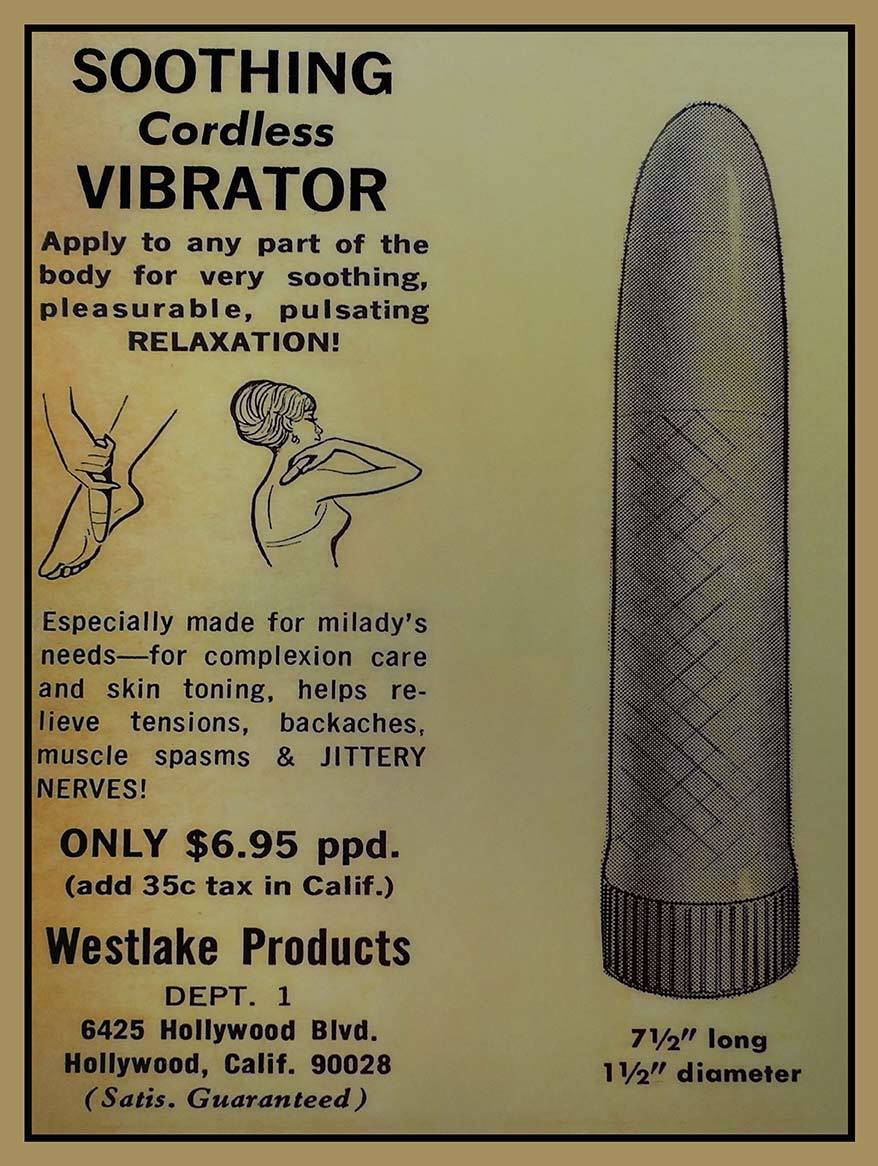
But, much more than any of Lebau's notions about matter and energy, I keep returning in my mind to his hoped-for meeting with Dingle and Karl Popper. Two venerable men of science, no doubt listening with attention and growing astonishment to the surprising mental productions of an New Jersey dentist. What an occasion that might have been! Michael Frayn's 1998 play, Copenhagen, tells the story of an encounter between physicists Niels Bohr and Werner Heisenberg in 1941. What a shame he could not have written a follow-up featuring Lebau, Dingle, and Popper meeting in a Soho Wimpy Bar in 1967 to debate the merits of Einstein's theories, wonder at the profundities of Duggie and Glird, and consider whether gravity is indeed, as Lebau so eloquently put it:
The overall gradients that inx-rinx through and out of the cad.
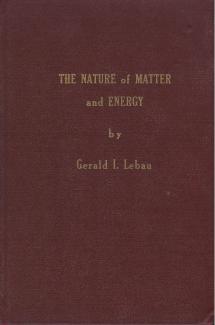
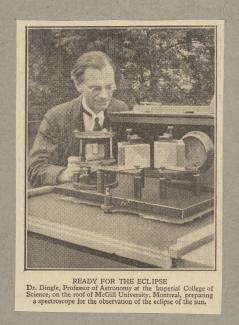
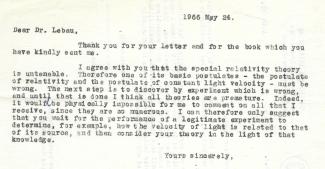
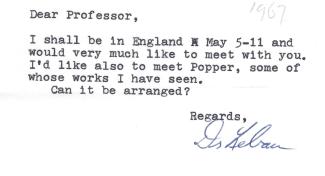
I don't think he used that…
I don't think he used that vibrator to "massage his skull with"...
The illustration does not…